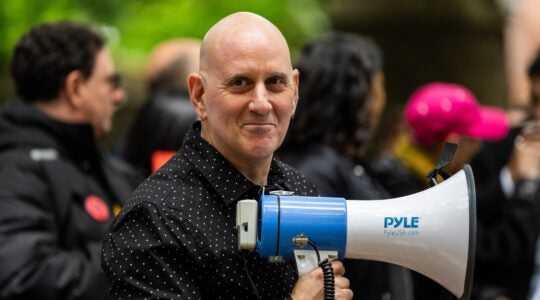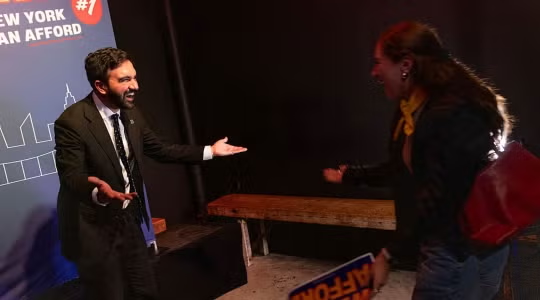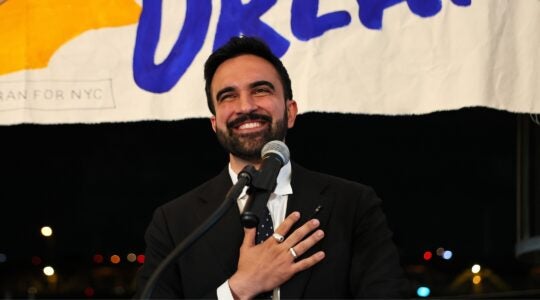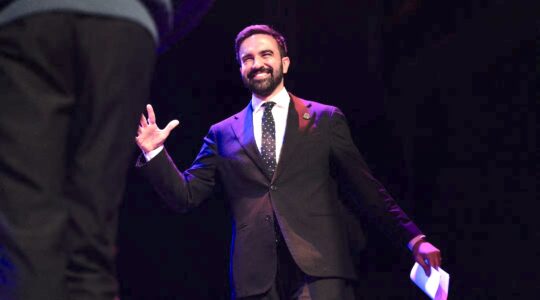It was a story about blacks and Jews, those ever-newsworthy New York perennials. It was about Rev. Jesse Jackson, and the notable praise he is winning from a Jewish community whose battles together with him and against him are the stuff of contemporary legend.It was about lives hanging in the balance in a distant country, and the compelling local story of family members here waiting anxiously for some hint of their fate.But if you have been depending on our New York dailies, it is a story about which you have most likely been left in the dark.With the exception of the New York Post, New Yorkís major dailies at first virtually ignored Iranís June 7 announcement that it was holding 13 Iranian Jews for the capital crime of espionage ó and Jacksonís surprise plunge into the fray to try and rescue them from execution.The story had no lack of the drama, man-bites-dog twists and, local angles of the sort that journalism textbooks define as news. Yet when Jackson appeared at Manhattanís tony Park East synagogue with just about every major national Jewish leader in New York to announce his campaign to go to Iran, if necessary, to save the 13 jailed Jews, The New York Times, the paper of record, decided to sit it out. Jewish leaders themselves had sat on the news of the imprisonment for months. Though the first were jailed in January, Iranian authorities announced no charges against them for months, and Jewish activists hoped that efforts at quiet diplomacy might spring them. Jewish leaders judged that public outcry would only yield a nationalist reaction that would hem in the moderatesí ability to help them.Nevertheless, the first disclosure of the story actually came two months ago, in the London-based Iranian weekly Nimrooz. Other brief, sketchy stories appeared in Haaretz, the Israeli daily, and in France. But the Iranian domestic press, which is subject to censorship, took no note of these, and Iranian authorities did not react. Meanwhile, according to Jewish leaders, contacts with government officials continued through intermediaries.Then, on June 5, Pouya Dayanim, an Iranian Jewish activist with the California-based Committee for Religious Rights in Iran, gave an interview about the plight of the 13 to BBCís Persian language service, which is beamed directly into Iran.And on June 7, Tehran Radio came out with the first official announcement of formal espionage charges against the 13.Officials from the Iranian Jewish Federation, the mainstream Iranian Jewish association in America, have strongly criticized Dayanim for breaking the silence. They say his move scotched their hope of resolving the situation quietly.But Frank Nikbakht, a member of Dayanimís committee, said Dayanim acted precisely because his group had received ìdefinite news through certain Iranian authoritiesî that the spy charges were about to be announced.In the four days after the Tehran Radio report was relayed internationally by the Associated Press, Haaretz ran a story every day.On Friday, June 11, the New York Daily News ran an op-ed by the ADLís Abe Foxman, and an editorial.Nevertheless, by the time of Jacksonís high-profile appearance with Jewish leaders on June 13, The New York Times had run just two small briefs.When Jackson called for the release of the Iran 13, and volunteered to go into Iran himself, it was reported with prominence in the Post, as a brief in the Daily News, and not at all by the Times. Nor did the Times or Daily News cover Jacksonís press conference the next day at the Isaiah Wall, across the street from the UN, after he was rebuffed by the Iran UN Mission in his request for a visa.The Times ran its first full-length story on the crisis, with a Cairo dateline, on June 18. They finally got around to mentioning Jacksonís willingness to go to Iran ó in the last paragraph of the story.That same day, columnist A.M. Rosenthal (June 18) had the chutzpah to write in the Times about how poorly the story was being covered. But of course, neither Rosenthal nor anyone else at the Times would know first-hand who was at the Jackson press conference. The ADL noted the presence there of the AP; Reuters; the Post; Israelís Yediot Ahronot, Maariv and Kol Israel; Fox News; WABC-TV; WNBC-TV; 1010 WINS; NY1 News; the Jewish Telegraphic Agency; the Forward; and The Jewish Week. But not the Times.The muted Times coverage distressed one Jewish leader enough that he called Joseph Lelyveld, the paperís executive editor, to complain. Malcolm Hoenlein, executive vice president of the Conference of Presidents of Major American Jewish Organizations, says Lelyveld told him, he would ìlook into it.î The Cairo-datelined story appeared soon after.A receptionist at Lelyveldís office said he was unreachable for comment.On Monday, the Times also ran a photo and caption of 350 demonstrators led by Rabbi Avi Weiss of Riverdale. The protestors marched on Sunday from the Iran UN Mission to the Isaiah Wall, calling for freedom for the 13 Jews. The Times photo ran on page B-4 of the Metro section. nStaff writer Lawrence Cohler-Esses contributed to this story.
The New York Jewish Week brings you the stories behind the headlines, keeping you connected to Jewish life in New York. Help sustain the reporting you trust by donating today.




